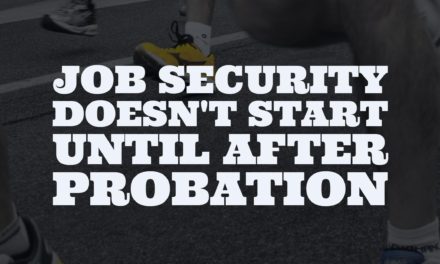You likely have a to-do list a mile long. Each tick of a task complete is followed by another start. You rush to the next item on the list with the hope that at some point you’ll finally make it to the end of the list. Yet, you know in your heart that another three tasks have likely been added in the time it took to cross the complete task out.
And so you think: I must persevere. I must work harder and faster.
And then you look for the answers of how to be more resilient and you find yourself here. Reading a post with the hopes of figuring out how to maintain your sanity AND get to the bottom of the to-do list.
Since you’re here, I wanted to share a poem I came across. It nearly stopped me in my tracks.
“Each thing I do, I rush through so I can do something else. In such a way do the days pass—a blend of stock car racing and the never ending building of a gothic cathedral. Through the windows of my speeding car I see all that I love falling away: books unread, jokes untold, landscapes unvisited. And why? What treasure do I expect in my future?” ― Stephen Dobyns Cemetery Nights
What are you rushing towards?
First thing is first. When we become stressed, our brain becomes hyper focused. A laser beam might be a reasonable image of this. The trouble with this is it prevents us from being able to think bigger or more strategically. We tend not to stop to think whether the next thing on the list is the right thing to do.
The key then is to take a break.
Tip #1: Reflect on what problem you are trying to solve.
What ever tasks you are doing are solving some sort of a problem, right? If not, why are you doing them?
Tip #2: Determine what tasks are the most critical.
Accept that it can’t all be done. That it SHOULDN’T all be done.
Try asking yourself this question. “What would happen if this thing did not get done?”
If the answer is, “I’ll get in trouble” or “Someone will be angry,” reflect on why. And, consider whether that’s a fact or an assumption.
Tip #3: Narrow down the critical tasks to those only YOU can do.
Too often we forget we aren’t alone. That there are others than can do the same work we do. We forget that even if we think someone else won’t do the task as well as us, that it’s ok.
Think about what you are uniquely capable of doing. What do you bring to the table that no one else does?
Go back to your list of critical tasks. Select the ones that would benefit most from your having done them.
Tip #4: Figure out whether the timeline is real(istic)
There are real deadlines. And, there are bluff deadlines.
Bluff deadlines are the ones people make up because they think a deadline is needed. They aren’t real.
A great example is a deadline of COB on Friday. You rush to hit the deadline. You hit it. Then, it sits in someone’s mailbox until Monday.
Would something bad happen if the product came in on Sunday night? Probably not.
But, who makes deadlines of OOB (opening of business)? No one. Likewise, no one seems to like deadlines of Sunday.
(I know, I’ve tried this and people got really weirded out by it).
The point is, be clear about what the REAL deadline is before you kill yourself trying to rush to hit it.
Which leads to the other kind of deadlines. The impossible deadlines.
It won’t matter how much you rush, it just isn’t feasible. They aren’t realistic.
I’ve never understood someone’s willingness to work towards an impossible deadline without negotiation.
I have to say that software people got the right idea with ‘backlog grooming‘. In short, backlog grooming is where the software development team regularly reviews all the work to be done to make sure they are working on the highest priority relevant tasks. So when deadlines get short, they can be sure that the highest priority tasks are the one that will be finished first.
What does this have to do with resilience?
A few years ago, I got into a situation where my support staff contract had a lapse. For three months, I had to do my job plus the job of 2-3 support staff members.
By the middle of the second month, I felt my patience slipping. The quality of my work was slipping. I wanted to pull my hair out but knew I had to soldier on until the support staff contract was back in place. More delays in contracting made the end of that tunnel more distant by the day.
Much like you may be doing now, I began looking for something to help me be more resilient. To help me keep it together. To keep my office together.
I was lucky enough to come across a book that changed my perspective on my situation at the time, and how I approach my work today.
I encourage you to take the time to read that book. If you happen to click through the image above and purchase the book, I will get a small commission. But I recommend it more for the value it will bring to you than to the small sum I might earn.
The point of the book is figuring out priorities. And most importantly, it is about being ok with unimportant things being left undone.
In a prior post, I made the point that resilience shouldn’t be about bouncing back to the way we were before the challenge we are facing. It’s learning to adapt. It’s about becoming a better version of ourselves as we make it through whatever we are facing.
I can honestly say that I am more resilient for having had a gap in my support staff contract than I was before it happened.
Are you building a Gothic cathedral?
When I read the line in Stephen Dobyn’s poem about building cathedrals, I immediately thought of a trip to Barcelona to see Gaudi’s Sagrada Familia. The Sagrada Familia has been under construction for over 135 years.
Sure it’s an amazing cathedral, unlike any you’ve seen elsewhere. But I have to wonder if the builders forgot the point.
A cathedral is a place of worship. It is created in the praise of God and for the purpose of worship.
You don’t have to be religious to see these builders are perhaps more caught up in showing off their building skills than in finishing the cathedral. That their focus on perfection and amazement has gotten in the way of meeting the goal of creating a place of worship.
So if you’ve gotten to this place where you are looking for answers for resilience, I ask you to go further back than just asking what problem you are solving.
I ask you to consider why YOU are solving the problem. Are you solving it for a greater purpose? Or, are you solving it primarily to show off your abilities? Because, if the real reason is the second, you may never find the end to your to-do list.
Stop the rush towards an unknown treasure
If you take the steps I recommend above, you will have more tools in your toolbox to be more resilient. The task list will be shorter. The urge to rush to the next task will become quieter. You will have a larger, more beneficial impact on whatever problem you are aiming to solve. You will grow as a leader by delegating tasks that others can do.
And, maybe you can take back some of those things mentioned by Stephen Dobyns.
- You might read that stack of books on your bedside.
- You will have time to stop and chat with coworkers about things other than how stressed out you are. Laugh a little even.
- You may have time to take a vacation. Imagine the luxury of not bringing your blackberry with you!
In case you missed it, take a look at our article: Resilience – is it happiness, optimism, or just a fad.






